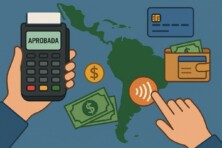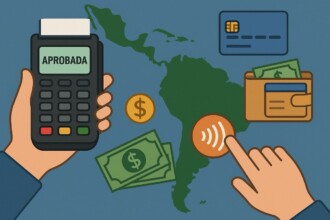Pricing is not just about numbers and margins. It’s an art and science that requires a deep understanding of how consumers perceive value. Behavioral economics, a fascinating field that blends psychology with economics, provides crucial insights into these perceptions. Understanding the principles of behavioral economics can help businesses craft pricing strategies that attract customers and enhance their perceived value of products and services.

Understanding Behavioral Economics
We may not always make the most logical choices, but our decisions often make sense when viewed through the lens of our experiences and perceptions. For those dealing with financial decisions, understanding these influences can be crucial, as resources like Moneyfor offer valuable advice on navigating debt relief and financial issues by considering the psychological factors that impact spending and saving.
Behavioral economics challenges the traditional economic assumption that humans are always rational actors making decisions based purely on logic and self-interest. Instead, it acknowledges that our choices are often influenced by cognitive biases, emotions, and social factors.
Key Concepts in Behavioral Economics
- Cognitive biases: These are mental shortcuts that can lead to errors in judgment. For instance, anchoring, loss aversion, and the endowment effect significantly impact how we perceive prices and value.
- Framing effect: The way information is presented can drastically affect decision-making. For example, a $50 discount might seem more attractive than a “10% off” offer, even if both result in the same price reduction.
- Heuristics: These are simple, efficient rules or mental shortcuts that people use to make decisions. While helpful, they often lead to biased conclusions.
How Cognitive Biases Influence Consumer Perception of Value
Cognitive biases play a significant role in shaping how consumers perceive value. By leveraging these biases, businesses can influence purchasing decisions and create a sense of greater value for their products or services.
Anchoring Effect
The anchoring effect is considered to be a cognitive bias in which people place significant importance on the first piece of information they receive, known as the “anchor,” when making choices. In terms of pricing, this implies that the first price a consumer observes can shape their understanding of value.
Imagine a luxury watch initially priced at $2,000. If the watch is later offered at a “discounted” price of $1,500, consumers are likely to perceive the reduced price as a bargain, even if the actual value of the watch is less than $1,500. The original high price serves as an anchor, making the discount appear more attractive.
Loss Aversion
Loss aversion refers to the tendency for people to prefer avoiding losses rather than acquiring equivalent gains. This bias can be used in pricing strategies to make offers more enticing. Limited-time offers or “buy now, pay later” schemes capitalize on loss aversion by creating a sense of urgency, encouraging consumers to act quickly to avoid missing out on a good deal.
The Endowment Effect
The endowment effect is the tendency for people to assign more value to things they own compared to things they do not. This can be leveraged by businesses to increase perceived value through personalization and customization. Companies that allow customers to customize their products—such as personalized clothing or tech gadgets—can enhance the perceived value and willingness to pay.
Pricing Strategies Influenced by Behavioral Economics
By understanding behavioral economics, businesses can craft pricing strategies that enhance perceived value. Let’s explore some common strategies driven by these insights.
Price Anchoring
When launching a new product, businesses might set a high initial price and then offer it at a discounted rate. This approach makes the discount feel like a significant saving compared to the original price.
Decoy Pricing
This strategy uses the decoy as a reference point to guide consumer choice. A restaurant offers three meal options: a Small Plate for $10, a Medium Plate for $15, and a Large Plate for $20. Introducing an Extra Large Plate for $25 might make the Large Plate seem like a better deal, thus increasing its sales.
Charm Pricing
Charm pricing, or psychological pricing, sets prices just below a round number, such as $9.99 instead of $10. This strategy takes advantage of the human tendency to perceive these prices as significantly lower.
Bundling and Discounts
Bundling involves offering multiple products or services together at a discounted price, creating the perception of added value. Businesses can bundle related items, like a smartphone with accessories, to encourage customers to buy more while feeling they’re getting a better deal.
Applying Behavioral Economics to Enhance Perceived Value
To effectively apply behavioral economics principles, businesses need to understand their target audience and tailor strategies accordingly. Here are some practical tips for enhancing perceived value through pricing strategies.
Know Your Customer’s Preferences
Conduct market research to identify consumer preferences, spending habits, and pain points. This information will help design pricing strategies that resonate with the target audience.
Communicate Value Clearly
The way pricing information is presented can significantly impact consumer perception. Use clear, concise, and persuasive language to communicate value. Highlight benefits and savings to make offers more appealing.
Create a Sense of Urgency
Limited-time offers, flash sales, and countdown timers can create urgency, encouraging consumers to act quickly to secure a deal.
Challenges and Ethical Considerations
While behavioral economics provides valuable insights for pricing strategies, businesses must navigate potential challenges and ethical considerations.
Avoiding Manipulation
Pricing strategies should be transparent and not manipulate consumers into making decisions that are not in their best interest. Ethical considerations are paramount in maintaining trust and credibility.
Maintaining Trust
Strategies that appear deceptive or exploitative can harm brand reputation and customer loyalty. Businesses should prioritize transparency and honesty in their pricing practices.
Balancing Profit and Customer Value
Businesses must find a balance between maximizing profit and delivering genuine value to customers. Prioritizing customer satisfaction and long-term relationships can lead to sustainable success.
To Sum Up
Behavioral economics provides a wealth of insights into consumer behavior and perception. By understanding and applying these principles, businesses can develop effective pricing strategies that enhance perceived value and drive sales. Whether through price anchoring, decoy pricing, or charm pricing, the key is to align pricing strategies with consumer psychology.









